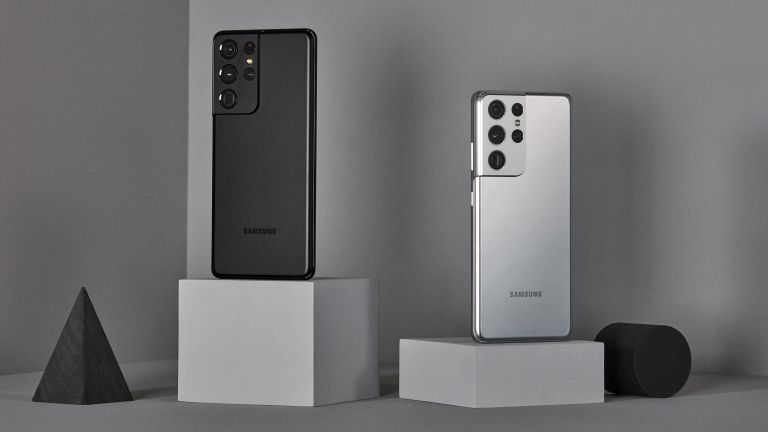Have you been searching for the best android phone to buy in 2022? Would you like to get the best android phones? Well, if you would like to get your hands on the best Android phone, the Samsung Galaxy S22 Ultra is the best option right now followed by Google Pixel 6. Samsung Galaxy S22 Ultra delivers all of the high-end specs and features you could ask for in a flagship smartphone, all while undercutting its rivals by a significant amount. That said, if you’re in the market for the best budget Android phone with differentiated software or a more unique design, there are plenty of other options to consider.
Table of Contents
Top 5 Android Phones to Buy in 2022
Here are our picks for the top 5 Android Phones you can buy right now in 2022!
1. Samsung Galaxy S22 Ultra
The overall best Android phone in the U.K.
Features
- Starting price: $1,199
- Android version: 12, One UI 4.1
- Display: 6.8-inch Dynamic AMOLED (3088 x 1440)
- Refresh rate: 1-120Hz
- CPU: Snapdragon 8 Gen 1 (US), Exynos 2200 (UK)
- RAM: 8GB, 12GB
- Storage / Expandable: 128GB, 256GB, 512GB, 1TB / No
- Rear cameras: 108MP (f/2.2) main, 12MP (f/2.2) ultrawide, 10MP (f/2.4) 10x telephoto, 10MP (f/2.4) 3x telephoto
- Front camera: 40MP (f/2.2)
- Battery: 5,000 mAh
- Battery life (Hrs:Mins): 8:50 (adaptive), 10:18 (60Hz)
- Size: 6.43 x 3.07 x 0.35 inches
- Weight: 8 ounces
- Colors: Phantom Black, Phantom White, Burgundy, Green
The Samsung Galaxy S22 Ultra is the headliner of the S22 series. It’s the first S series phone to include Samsung’s S Pen. Specifications are top-notch including 6.8-inch Dynamic AMOLED display with 120Hz refresh rate, Snapdragon 8 Gen 1 processor, 5000mAh battery, up to 12gigs of RAM, and 1TB of storage. In the camera department, a quad-camera setup is presented with two telephoto sensors.
Why Buy Samsung Galaxy S22 Ultra?
- Stylus support
- Camera system with dual telephoto cameras and excellent low-light performance
- Phenomenal display
- Incredibly bright display
- Built-in S Pen
- 45W fast charging
TODAY’S BEST DEALS
Why you Should Avoid Galaxy S22 Ultra.
- Charger not included-Less RAM by default than S21 Ultra
Considering that Samsung’s Galaxy S21 Ultra held this spot for almost all of 2021, Samsung didn’t need to do much for the Galaxy S22 Ultra to claim this spot immediately upon release. But Samsung didn’t rest on its laurels. It brought perhaps the most radical change to a Galaxy S phone yet by making it essentially the new Galaxy Note.
The Galaxy S22 Ultra doesn’t feel like an S22 at all – in fact, this is more like a covert revival of Samsung’s once-loved Note brand, with a distinct design from its S22 siblings and a built-in slot to store the included S-Pen stylus.
The Galaxy S22 Ultra brings back the awesome and versatile camera system of the Galaxy S21 Ultra, but with superior software processing and computational photography smarts for an even better camera system: shots in low light are less noisy and better balanced; videos are more stable, the zoom prowess even more epic. This is a phone that can grab super sharp and clean 10x zoom images, and even respectably decent 30x zoom images. And while the 100x shots are still not great, they have improved tremendously as well.
2. Google Pixel 6
The best photography Android phone for most people:
Features
- Display: 6.4-inch FHD OLED (2400 x 1080); 90Hz
- Chipset: Google Tensor
- RAM: 8GB
- Storage: 128GB/256GB
- Rear cameras: 50MP wide (ƒ/1.85), 12MP ultrawide (ƒ/2.2)
- Front camera: 8MP (ƒ/2.0)
- Battery: 4,614 mAh
- Operating System: Android 12
TODAY’S BEST DEALS
CHECK AMAZON (We check over 250 million products every day for the best prices)
Why Buy Google Pixel 6?
- Excellent photos backed up with smart editing features
- Incredibly well-priced
- Tensor chip-enhanced AI
- New design
- Excellent cameras
- Clean software
Why you Should Avoid Google Pixel 6.
- Only two rear cameras
- Disappointing battery life
- Unreliable fingerprint sensor
- Struggles with heavy gaming
Google has really turned its flagship fortunes around with the amazing Pixel 6 series. While this spot could easily belong to the Pixel 6 Pro, which offers an extra camera, a larger, more detailed display with a higher refresh rate, and superior computing performance, the sheer value of the £599 Pixel 6 makes it the better choice for the majority of buyers. Just watch out for minor snags of short battery life and unreliable fingerprint scanner if you go for either Pixel 6 model.
And starting at $599, the newly released Google Pixel 6 takes this category by a landslide. Despite costing almost half of the typical flagship phone, there are several key flagship features in the Pixel 6, including Google’s first-ever self-developed SoC, Tensor, a new 50MP camera that, when paired with Google’s camera software prowess, makes for arguably the best main camera around. You also get a relatively large 4,614 mAh battery, a 6.4-inch OLED screen, IP68 water resistance, and a gorgeous, unique design with some very fun colors.

There are areas of compromise to get this phone down to this price range: the display only refreshes up to 90Hz (but Google’s UI optimization is so good that animations feel smoother than that anyway), there’s no zoom lens, and relatively slow wired and wireless charging. But these compromises are very easy to accept for those who want a phone that looks and feels like a flagship but costs half the price.
Just like on previous Pixels, photography is the standout feature. You may not have a telephoto camera, but between the initial quality of the images and clever editing features like Magic Eraser and Motion Mode, you have the best photo-taking experience around.
The new key part of the Pixel experience is Google’s proprietary Tensor chip. It has decent performance but shines when it comes to AI tasks like reading text from an image or translating for you in real-time. In a Sentencence, the Pixel 6 is the best overall value according to our findings and the best phone for most people.
3. Samsung Galaxy S22 Plus
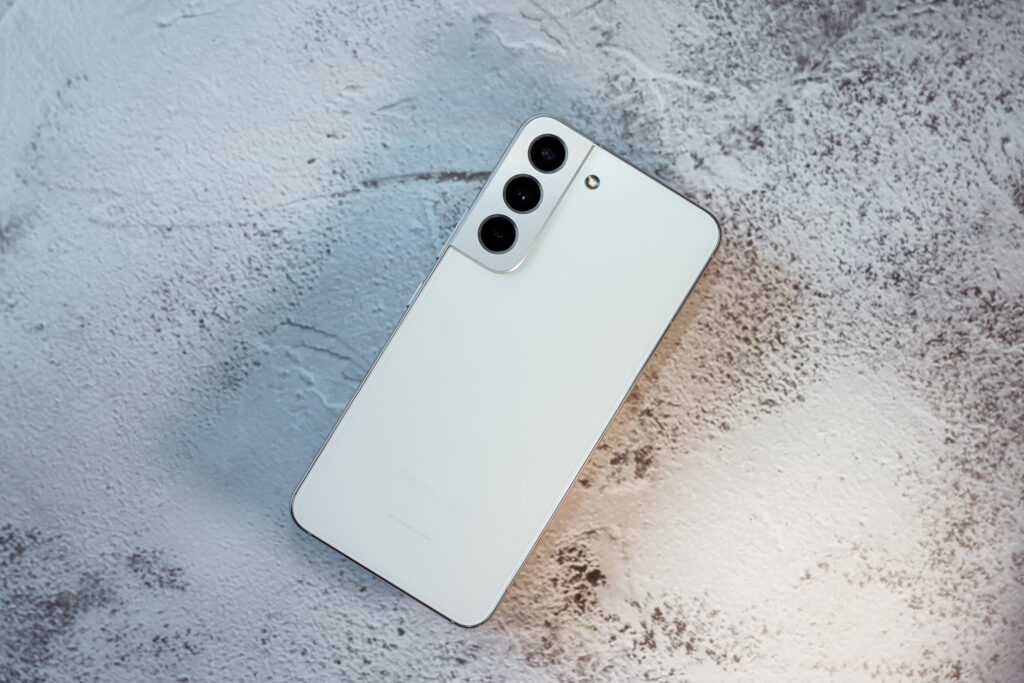
Features
- Starting price: $999
- Display size: 6.6-inch AMOLED (2340 x 1080)
- Refresh rate: 48-120Hz adaptive
- CPU: Snapdragon 8 Gen 1 (US); Exynos 2200 (UK)
- RAM: 8GB
- Storage: 128GB, 256GB
- Rear cameras: 50MP wide (f/1.8); 12MP ultrawide (f/2.2); 10MP telephoto (f/2.4) with 3x optical zoom
- Front camera: 10MP (f/2.2)
- Battery size: 4,500 mAh
- Battery life (Hrs:Mins): 9:46 (adaptive), 9:57 (60Hz)
- Size: 6.2 x 3 x 0.3 inches
- Weight: 6.9 ounces
- Colors: Phantom Black, Phantom White, Green, Pink Gold
If you find the Galaxy S22 Ultra’s $1,200 price just a tad too high, the Galaxy S22 Plus offers a lot of what made that phone great at a penny under $1,000. You won’t get the S-Pen stylus, nor the 10x Periscope zoom lens, but you still have a beautiful 120Hz OLED screen, an excellent 50MP main camera, solid 12MP ultra-wide lens; and a superb 3x telephoto zoom lens.
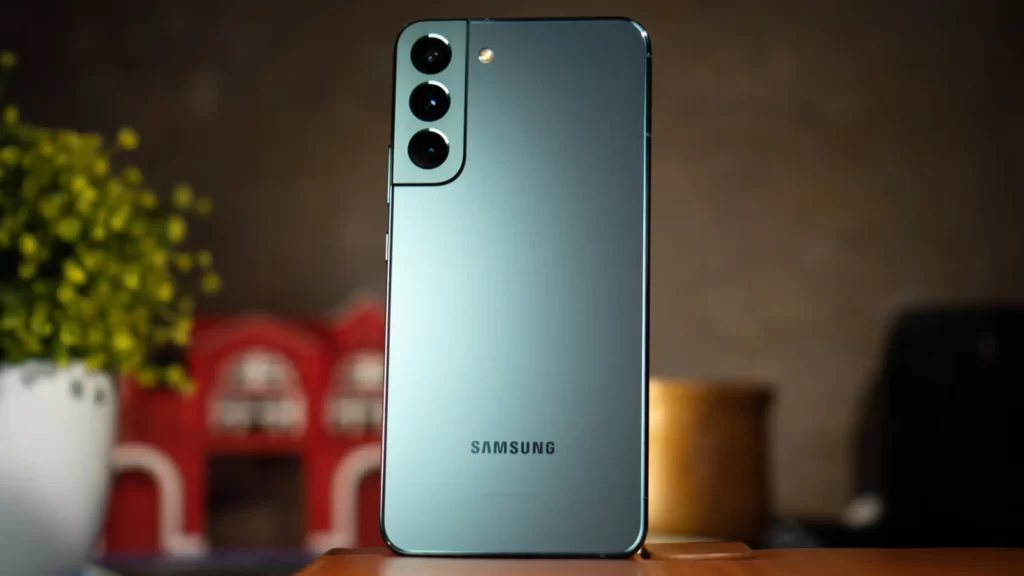
The Galaxy S22 Plus is also a bit smaller — its screen is “just” 6.6-inches — without the pointy corners of the Ultra, so it’s almost objectively a more comfortable phone to hold. On the software front, you still get Samsung’s excellent OneUI with all the bonuses that come with it including Samsung DeX; and you also get a top-end SoC (either Snapdragon 8 Gen 1 or Exynos 2200 depending on your region) too. The 4,500 mAh battery here, while not as large as the one in the Ultra, is still enough to power the phone all day, and it’s also rated IP68 for water and dust resistance. Simply put, while the Galaxy S22 Plus is not Samsung’s top slab phone offering, it is flagship enough for most people.
TODAY’S BEST DEALS
CHECK AMAZON (We check over 250 million products every day for the best prices)
Why Samsung Galaxy S22 Plus?
- Beautiful and very bright display
- Powerful performance
- Faster 45W charging
- Strong telephoto camera
Why you Should Avoid samsung galaxy s22 plus.
- Most camera improvements still can’t match Google Pixel
- Battery life barely better than last year
4. Samsung Galaxy A52 5G
Best Mid-Range Android Phone

- Starting price: $499/£400
- Display: 6.5-inch FHD AMOLED (1080 x 2400)
- Refresh rate: 60Hz/120Hz
- Chipset: Snapdragon 750G
- RAM: 6GB
- Storage: 128GB
- Expandable storage: microSD up to 1Tb
- Rear cameras: 64MP main (f/1.8), 12MP ultrawide (f/2.2), 5MP macro (f/2.2), 5MP depth sensor (f/2.2)
- Front camera: 32MP (f/2.2)
- Operating system: Android 11 with One UI 3.0
- Battery: 4,500 mAh
- Battery life (Hrs: Mins): 12:19 (60Hz), 10:19 (120Hz)
- Charging: up to 25W wired
- Size: 6.3 x 2.9 x 0.3 inches (159.9 x 75.1 x 8.4mm)
- Weight: 6.7 ounces (189 grams)
- Water/dust resistance: IP67
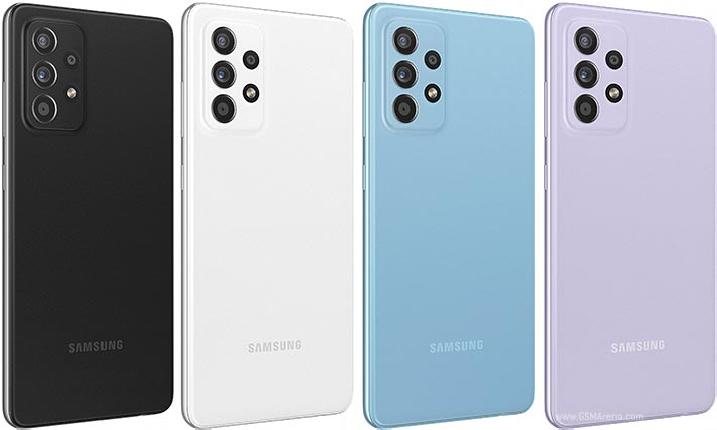
Samsung Galaxy A52 5G Pros
- 120Hz display
- Versatile main camera
- Unique and fun design
- Long-lasting battery
- Snapdragon 720G is still a capable SoC
Samsung Galaxy A52 5G Cons
- Other cameras below average
- Easily scratched display
- While the main camera is good, the peripheral cameras are just average
- Starts with just 4GB of RAM and 128GB of storage
The Samsung Galaxy A52 5G offers just enough premium features for little enough money to make users think twice about buying a flagship phone. Priced at $499/£400, it’s designed for the average user who cares mainly about photography, streaming, gaming and battery life. With this phone, you get a 120Hz display, four rear cameras and 5G connectivity in a colorful design — all for less than $500.
The Galaxy A52 5G delivers enough flagship-level features that may tempt you to buy this phone rather than the more expensive Samsung Galaxy S21 or Galaxy S20 FE. But as we found during testing for our Samsung Galaxy A52 5G review, this handset isn’t as strong as other midrange phones in its price range.
The mid-range phone scene in North America isn’t as vibrant as in Asia, but thanks to Samsung, there are still some very capable options at that $500-ish range. At this price point in North America, you’d be hard-pressed to find something better than the Samsung Galaxy A52 5G. It’s a sleek, 5G-ready device with Samsung’s polished software, industry-best screen, and IP67 water and dust resistance rating.
While the display refreshes at only 90Hz, it is a 6.5-inch Samsung Super AMOLED panel, so it’s a vibrant screen with colors that pop. The quad-camera system is headlined by a capable 64MP, f/1.8 camera that can produce pleasing photos. The 12MP ultra-wide is solid too if you’re shooting under well-lit conditions. The final two cameras: a pair of 5MP sensors for macro and depth-sensing are just okay. Flip the phone around and you have a capable 32MP selfie camera, so in all, the camera experience here can be considered good at this price range.
The Snapdragon 720G chip here is very capable even in 2022, and the 4,500 mAh battery is enough to keep the phone running all day. You also get stereo speakers, an in-display fingerprint reader, and a 3.5mm headphone jack. While the plasticky body doesn’t feel that premium, at least it comes in a variety of fun colors. On the software front, you get Samsung’s capable OneUI 3.1 here over Android 11 — but Android 12 updates are rolling out for the device, so you shouldn’t have much to worry about. The software and UI feels fluid and mostly on par with a top-notch Samsung experience.
If you’re choosing to go with the Galaxy A52 over, say, a Galaxy S21 Ultra, you’re really only missing the awesome Periscope zoom lens, glass and aluminium body, and a Snapdragon 888. If none of these things matters that much to you, the Galaxy A52 will serve you very well.
5. Samsung Galaxy Z Fold 3
Best Foldable phone

In the first two years of foldable phones’ existence, skeptics and doubters have pointed to their high prices and supposed fragility as a sign that foldables were just a fad. Well, Samsung is here to tell the naysayers “nah.” The Galaxy Z Fold 3 not only managed to do what was previously thought impossible by water-proofing the device, Samsung also lowered the price by 10%. Sure, at $1,800 it’s still expensive, but this is a bleeding-edge portable computer that can do literally a million things. There is nothing else like it.
That’s not all when it comes to improvements. The Galaxy Z Fold 3 also improved the foldable display to make it sturdier and feel more like glass. This foldable screen also supports the S-Pen, although a separate purchase is required. The outside “cover display” gained a refresh rate up to 120Hz, and the overall dimensions of the phones have shrunk ever so slightly. The hard sharp corners of the previous device have been rounded, making for a foldable that, while still a bit hefty at 271g, is easier to handle and carry.
Features
- Display: 6.2 inches external (2268 x 832; 120Hz), 7.6 inches internal (2208 x 1768; 120Hz)
- Chipset: Snapdragon 888
- RAM: 12GB/16GB
- Storage: 128GB/512GB
- Rear cameras: 12MP wide (f/1.8); 12MP ultrawide (f.2.2, 123-degree FOV); 12MP telephoto (f/2.4, 2x optical zoom, 10x digital zoom)
- Front cameras: 10MP cover (f/2.2), 4MP internal (f/1.8)
- Battery: 4,400 mAh
- Operating System: Android 11 wut One UI 3.1

TODAY’S BEST DEALS
Why Buy Samsung Galaxy Z Fold 3?
- Enhanced water-resistant design
- Amazing multitasking potential
- S Pen support
- Huge inner display
- Excellent speakers
Why you Should Avoid Samsung Galaxy Z Fold 3.
- S Pen costs extra
- Heavy and bulky
- No periscope camera
- Very expensive
Do you have £1,600 and want to spend all of it on a phone? Why not throw caution to the wind and buy the Galaxy Z Fold 3, the most advanced phone currently on sale in the U.K.
The Galaxy Z Fold 3 is flexible — both literally, with its folding inner/outer display design, and metaphorically thanks to modified software and the introduction of S Pen compatibility for even more options. Plus, the Galaxy Z Fold 3 now offers IPX8 water resistance, making it less likely to suffer catastrophic damage.
The main limitation here is the Z Fold 3’s price — both the astronomical cost of the phone and the fact that the S Pen doesn’t come as standard (although some retailers do offer it as a welcome package, so shop around). This is such a cool phone though, and one that’s genuinely useful in ways few others are. So perhaps all that money is worth it after all.
If you want a phone that can be both a tablet and a smartphone, the Galaxy Z Fold 3 is hard to beat right now. If you find it a bit too big, however, then Samsung has a smaller option for you too — Samsung Galaxy Z Flip 3.
6. OnePlus 9 Pro
Best Android Phone for software and speed
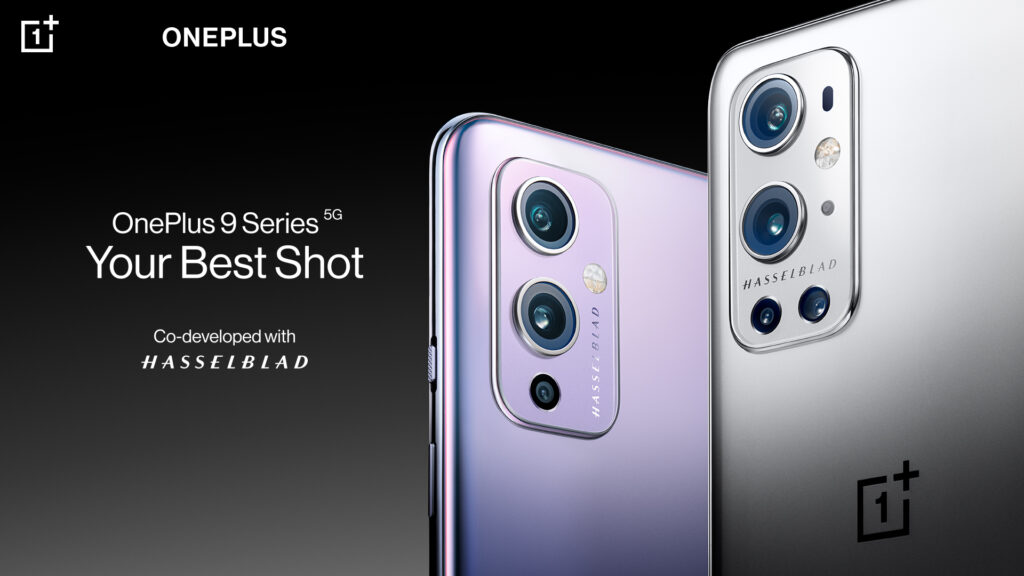
- OS: Android 11 / OxygenOS 11
- Screen size: 6.7-inch AMOLED QHD+ (3,168 x 1,440)
- Refresh rate: 1Hz – 120Hz
- CPU: Snapdragon 888
- RAM: 8GB, 12GB
- Storage: 128GB, 256GB
- Rear cameras: 48MP (f/1.8) wide, 50MP (f/2.2) ultrawide, 8MP (f/2.4) telephoto with 3.3x optical zoom, 2MP (f/2.4) monochrome
- Front camera: 16MP (f/2.4)
- Video: Up to 8K at 30 FPS
- Battery: 4,500 mAh
- Battery life (Hrs:Min): 10:40 (120Hz) / 10:38 (60Hz)
- Charging: 65W wired (charger included), 50W wireless
- Colors: Morning Mist, Pine Green
- Size: 6.4 x 2.9 x 0.34 inches
- Weight: 6.9 ounces
OnePlus is a brand that’s always been about speed, and the OnePlus 9 Pro is once again the fastest phone on the market. Everything – from the near-instantaneous speed at which apps launch to how the notification panel whips up and down along with your finger swipes – even the UI here has been optimized for speed.
But even going beyond speed, I’ve been a fan of OnePlus’ Android skin, OxygenOS, for years because it offers plenty of customization and shortcut gestures galore. Want to use multiple different icon packs on one home screen? Or change the accent color scheme of your app drawer? Or quickly launch an app action by long-pressing the fingerprint sensor? OxygenOS offers more ways to use Android, much more than Google’s own stock UI.
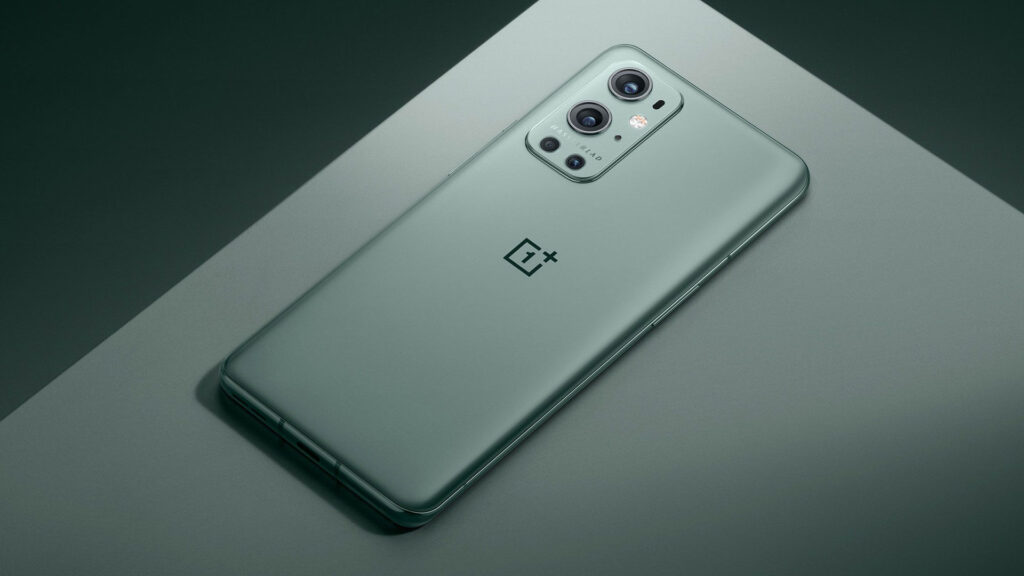
But of course, the OnePlus 9 Pro is a flagship phone and it comes with hardware to match too. The OnePlus 9 Pro offers a 6.7-inch 1440 x 3216 OLED display with a refresh rate of up to 120Hz. The display doesn’t quite get as bright as a Galaxy S21 Ultra, but otherwise, vibrancy and that visual oomph feel similar. This is a gorgeous-looking screen on which you’d want to watch videos. Powering the phone is a Snapdragon 888 with 8 or 12GB of RAM, as well as a 4,500 mAh battery.
The “Hasselblad” camera system is headlined by a 48MP, f/1.8, 1/1.43″ main camera, along with a 50MP ultra-wide shooter and an 8MP 3.3x telephoto zoom lens. There’s also a 2MP monochrome sensor that, unfortunately, doesn’t do much. Look at this phone as a triple-camera array.
But the good news is the cameras are quite good. Hasselblad has apparently helped fine-tune some of the color science and for the most part, I quite like the shots captured by the OnePlus 9 Pro. You can also zoom in and out in the camera app without seeing noticeable stutters when switching between lenses the way the Galaxy S21 Ultra does. Like we said earlier, OnePlus phones just generally zip around faster and more fluidly.
Another thing that’s very fast? Charging speeds. The OnePlus 9 Pro ships with a 65W fast charging brick that can top up the phone from 0-100% in 30 minutes, and the phone also supports wireless charging up to 50W, which can pump the phone from empty to full battery in 43 minutes. You will need the official OnePlus wireless charger to get those speeds, however.

Why you Should buy OnePlus 9 Pro
- Gorgeous design
- Beautiful 120Hz display
- Excellent performance
- Crazy fast wired and wireless charging
- Great display
- Fast performance
- Etrememly fast charging
- Fantastic cameras
Why you Should Avoid OnePlus 9 Pro
- Morning Mist model is very slippery
- Average battery life
- OxygenOS is turning into ColorOS
- Nightscape photos are inconsistent
7. Vivo X70 Pro Plus
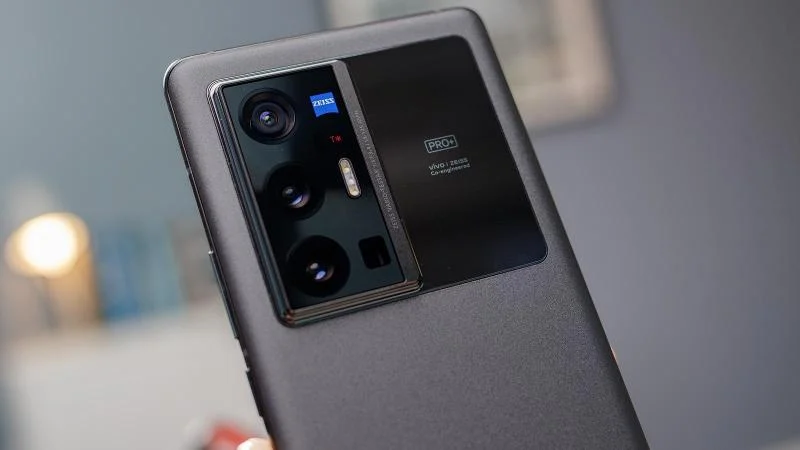
I know we just waxed poetically about the Google Pixel 6’s camera prowess, but the best overall camera goes to the Vivo X70 Pro Plus in my opinion because it has a more well-rounded system.
The X70 Pro Plus’s 50MP main camera is only a hair behind the Pixel 6 Pro’s in terms of consistency and shutter speed (they use the same Samsung GN1 sensor, in fact), and the X70 Pro Plus’s 48MP ultra-wide, built on top of a miniature 3-axis gimbal, produces superior ultra-wide shots than the same lens in the Pixel 6 (or iPhone 13 Pro or Galaxy S21 Ultra, for that matter). In fact, BBK Electronics (the parent company behind Vivo, OPPO, and OnePlus) has knocked it out of the park this year with ultra-wide shooters, as the OnePlus 9 Pro and OPPO Find X3 Pro also offer superb ultra-wide shooters. But the gimbal stabilization here gives the X70 Pro Plus the edge.
Then there are the two zoom lenses: the Vivo X70 Pro Plus has a 12MP 2x optical zoom lens along with an 8MP 5x Periscope zoom lens. While we think the Galaxy S21 Ultra’s 3x and 10x are better dual-focal length setups, Vivo’s 2x and 5x still beats the Pixel 6 Pro’s sole 4x zoom lens in terms of focal length versatility.
And with a self-developed ISP inside the V1 chip, the X70 Pro Plus excels in videos too. Whether it’s day or night, every footage shot with the X70 Pro Plus is perfectly balanced and as stable as any Android phone gets.
Elsewhere, the Vivo X70 Pro Plus also packs a Snapdragon 888+, with 12GB of RAM, and a vibrant, 120Hz 6.8-inch OLED screen. Even on the software front, which had previously been a weak point of Vivo phones, is better than before now. FunTouchOS isn’t perfect, but it behaves much closer to its BBK cousins OxygenOS and ColorOS, which means it’s a functional software with lots of customization options.

The only downside to the Vivo X70 Pro Plus is that the phone is not on sale officially in the US, so many readers can’t buy this officially. Still, we cover smartphones on a global scale, and the Vivo X70 Pro Plus has the best overall camera system yet.
Why you Should buy Vivo X70 Pro Plus
- Gimbal stabilization
- Excellent main and ultra-wide cameras
- Sharp, fast screen
- Smooth gimbal video
- Speedy performance
- IP68 rating and wireless charging
- Flagship performance
Why you Should Avoid Vivo X70 Pro Plus
- Slightly heavy
- Funtouch OS
- Pre-installed bloatware
